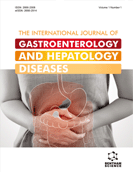Abstract
Campylobacteriosis is a foodborne disease caused by Campylobacter, which is one of the leading causative agents of bacterial gastrointestinal diseases in developed and developing countries. According to WHO, Campylobacter species infects a hundred million people yearly. The bacterium is thermotolerant, cytochrome oxidase-positive, spiral-shaped, gram-negative, and microaerophilic, by exhibiting corkscrew motility it passes through the intestines of animals and birds. It is generally transmitted through the consumption of contaminated food associated with animal and their products. The main infectious species include C. coli, C. jejuni, C. fetus and C. upsaliensis. Infection symptoms can be mild to serious depending upon the patient's age and in some cases can lead to permanent neurological disorders. Detection of Campylobacter in food, clinical and environmental samples is accomplished with the help of combinatorial usage of selective enrichment and culture methods. Currently, there is no sole viable approach for infection management because of resistance emergence. In this review article, we discuss Campylobacter epidemiology, pathogenicity, various diagnostic methods and treatment of Campylobacteriosis.
Keywords: Campylobacter, pathogenicity, gastroenteritis, epidemiology, fouelborne disease, domestic animals.










